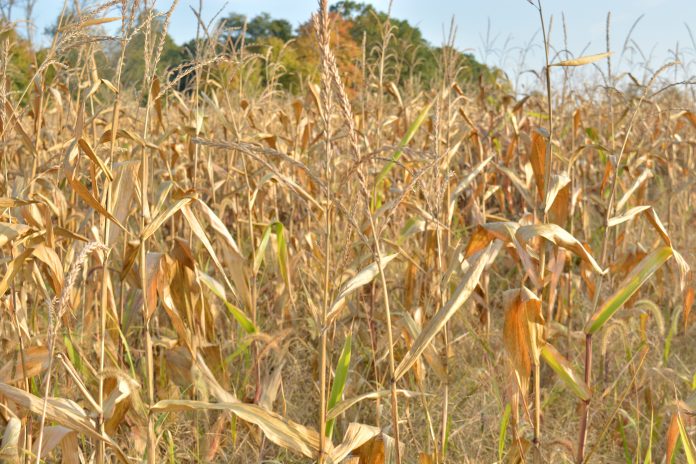SALEM, Ohio — Across Ohio, parts of the state are now facing dry conditions and drought according to the United States Drought Monitor.
Farmers in areas that were hit hard with rain earlier this year were already concerned about low yields following a late planting season. Now, late-planted crops that had less time to mature before the drought may suffer, resulting in even lower yields than expected.
As of Sept. 24, the monitor reported that about 65% of Ohio was abnormally dry, and 8% of that was in moderate drought. The monitor considers data including soil moisture, stream flow and precipitation to determine what areas may be facing drought.
West Virginia was worse off, with over 99% of the state abnormally dry and over 40% of that in moderate drought.
Under abnormally dry conditions, crop growth can be stunted. In areas with moderate drought, hay and fruit yields can be low, corn may be curling and small brush fires may occur.
Harvest
Chris Zoller, extension educator for Tuscarawas County, said he believes the impact of the drought will be worse in western and northwest Ohio, where many farmers planted late this year due to the extreme rainfall.
“I think there is going to be some impact because of the dry weather,” he said. “It’s hard to say right now what it’ll be.”
Zoller said farmers in his county are just starting their harvests. So far, the farmers he’s talked to have been happy with their results.
His western and northwestern Ohio colleagues, however, told him some farmers in their areas aren’t even near being ready for harvest due to the late planting. Zoller said the soybeans, alfalfa and cover crops that were planted late this year in other parts of the state could use more rain.
“Fields are not as good as they hoped they’d be or as they normally would be,” Zoller said about western Ohio.
“Our part of the state is, I think, very fortunate this year,” Zoller said.
While Tuscarawas County did get excessive rainfall earlier this year, it was not as severe as some parts of the state, and the dry conditions are not as bad there as in western Ohio.
Livestock
The West Virginia Department of Agriculture offered tips for livestock farmers under dry conditions in response to the drought. Livestock farmers facing dry conditions should watch for heat stress in their animals and make sure they have plenty of high-quality water.
The WVDA said farmers who are out of pasture should confine livestock to one pasture or aftermath hayfield and feed them hay with plenty of water. Farmers should allow for 10% refusal instead of making livestock clean up all the hay to make sure they have enough feed.
Once the rain comes and plants start growing again, livestock can go back to new pasture one it reaches 8-10 inches in height or greater, WVDA said. In the meantime, farmers can also inventory hay and pasture supplies to make sure they have enough for fall grazing and for the winter.
Farmers can haul water with caged water tanks from chemical and food industry as long as the containers were used for food, according to the WVDA.











